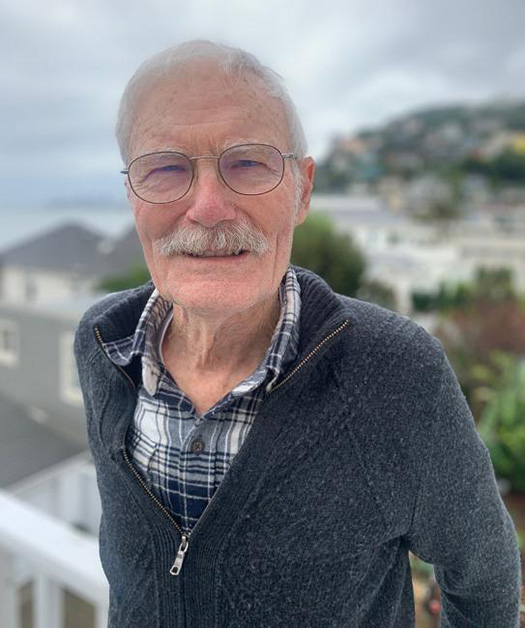For Release: January 29, 2024
CXC

Frederick Seward, an astrophysicist at the Center for Astrophysics | Harvard & Smithsonian (CfA), has been awarded the 2024 George Van Biesbroeck Prize from the American Astronomical Society (AAS). This prize, given every two years, honors a living individual for long-term extraordinary or unselfish service to astronomy, often beyond the requirements of his or her paid position.
Seward is recognized for the establishment and implementation of the first open, peer-reviewed Guest Observer program for a Principal-Investigator-led NASA space-based observatory, including developing and refining procedures and policies that later became standard practice for satellite missions.
In the 1970s, NASA launched the Einstein Observatory, which was designed by researchers at the CfA, and was the first fully imaging X-ray telescope to be put into space. Fred Seward led the Einstein team in defining and implementing a process where the observatory and its data would over time be made available to the scientific community through a peer-review selection process.
"There was no precedent for such a process during this era for space missions, which up to this point had been treated as experiments," said Patrick Slane, Director of the Chandra X-ray Center at the CfA where Seward worked until his recent retirement. "Back then, NASA did not require that an observatory be treated as a public entity, but Fred worked with them to make it happen."
Soon, Fred Seward’s model of open access became standard practice for satellite missions around the globe. This has included missions such as NASA’s Hubble Space Telescope, Chandra X-ray Observatory, and James Webb Space Telescope. Other space agencies around the world, including the European Space Agency (ESA), the Japanese Space Agency (JAXA), and Indian Space Research Organization (ISRO), have all adopted practices similar to those established by Seward.
"It's gratifying to be recognized by my peers and an honor to accept this award," said Seward. "This was accomplished by a group effort. Riccardo Giacconi very much wanted to make Einstein observing time available to the astronomical community and his Group at SAO developed analysis software which was understandable, set up a Visitors Workplace, and helped Guest Observers process their observations."
"As astronomers, we all owe a vote of thanks to Fred Seward," said Lisa Kewley, Director of the CfA. "Because of his work to expand the sharing of these facilities, he made the field of space astronomy more accessible to many more people and grew our field."
Beyond his idea of how these telescopes should be used, Seward also personally helped scientists prepare observing proposals, organized the peer reviews that would award data, and arranged for staff (often himself) to help new investigators to understand pipeline products and apply the available processing and analysis tools needed for the research and interpretation of the data.
Frederick Seward received his undergraduate degree in physics from Princeton University in 1953 and then his doctorate in nuclear physics from the University of Rochester. He worked at Lawrence Livermore Laboratory 1960-1975 before in 1977 moving to the newly formed Harvard-Smithsonian Center for Astrophysics, CfA, (now known as the Center for Astrophysics | Harvard & Smithsonian). He remained with the CfA until his retirement in 2005.
Seward was honored for his prize at the 2024 winter AAS meeting, which was held in New Orleans, LA.
The Center for Astrophysics | Harvard & Smithsonian (CfA) is a collaboration between the Harvard College Observatory and the Smithsonian Astrophysical Observatory. It is designed to ask—and ultimately answer—humanity's greatest unresolved questions about the nature of the universe. The CfA is headquartered in Cambridge, MA, with research facilities across the U.S. and around the world.
Media Contact(s):
Megan Watzke
Chandra X-ray Center
Center for Astrophysics | Harvard & Smithsonian (CfA)
Cambridge, Massachusetts
617-496-7998
mwatzke@cfa.harvard.edu


